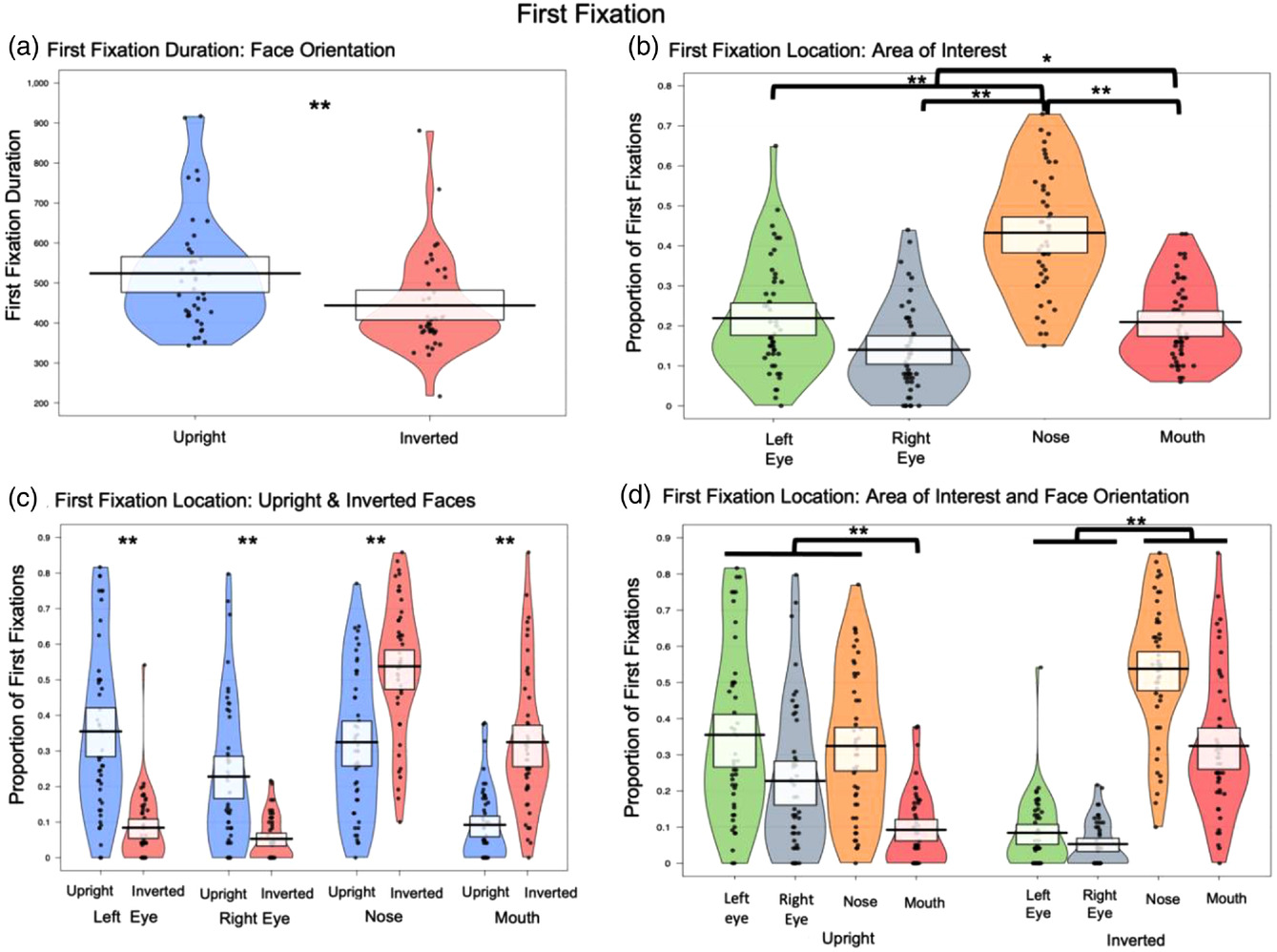We’re excited to announce a recent publication by Julia Farrell, a PhD student in the BCD Lab. This paper, published in Developmental Psychobiology, explores how preschool children differentially view faces based on factors like face race, sex, and orientation (upright or inverted).
Using eye-tracking, we found that children’s visual orienting and attention strategies differed when faces were presented upside-down, with shorter duration fixations and fewer fixations to the eyes, both during the initial fixation and across the entire trial. Children also exhibited fewer but longer duration fixations when viewing less experienced face types, e.g., male and unfamiliar race faces. Notably, these results were only present over longer periods of observation and not for the initial fixation.
These results suggest that the face inversion effect in children is carried in part by the initial fixation to face features. Face race and sex also impact children’s face processing, emerging over longer periods of looking. These findings underscore the importance of familiarity and prior experiences in the development of face processing in children. 🧠
Access the full paper here: Face race and sex impact visual fixation strategies for upright and inverted faces in 3- to 6-year-old children

